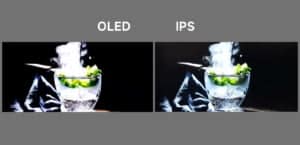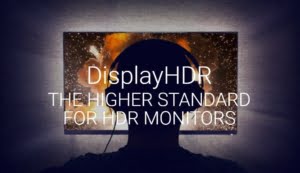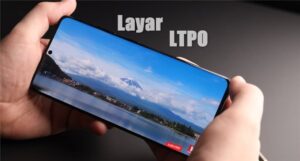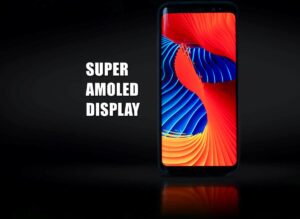QLED stands for Quantum Dot Light Emitting Diode, it’s a technology used in Samsung’s Television. It’s considered to be a step up from regular LED TVs, although it falls short of OLED technology. QLED TVs have some advantages, such as the ability to produce natural color quality.
The name “QLED” is similar to “OLED” with the only difference being the “Q” and “O” respectively. Before discussing the differences between QLED and OLED, let’s first explain the technology behind QLED.
What is QLED?
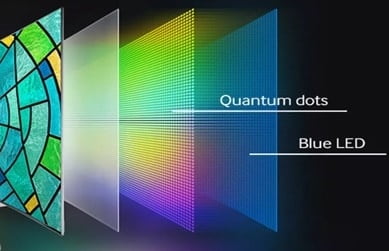
QLED is a technology developed by Samsung for their high-end TV products, and some have also been used in monitor products.
This technology uses Quantum Dots or quantum dots to display colors. With the presence of metallic quantum dot filters, QLED screens can be more colorful, more contrast, and have better HDR image capabilities compared to regular LED/LCD screens.
In summary, the construction of the panel is almost the same as a regular LED panel, the only difference is that QLED uses inorganic quantum dots embedded in the LCD panel.
Quantum dot technology?
Quantum dots are a type of semiconductor particles that measure a few nanometers in size (1 nano is 0.000.001 mm or one per million millimeters). These particles are optical and electronic (or inorganic) in nature, they are made of aluminum compounds, and their properties differ from those of larger particles.
Initially, this technology was only used by Samsung. However, due to licensing partnerships, this technology has also been adopted by other manufacturers. As a result, we can find QLED technology in TVs from other brands such as TCL and Xiaomi.
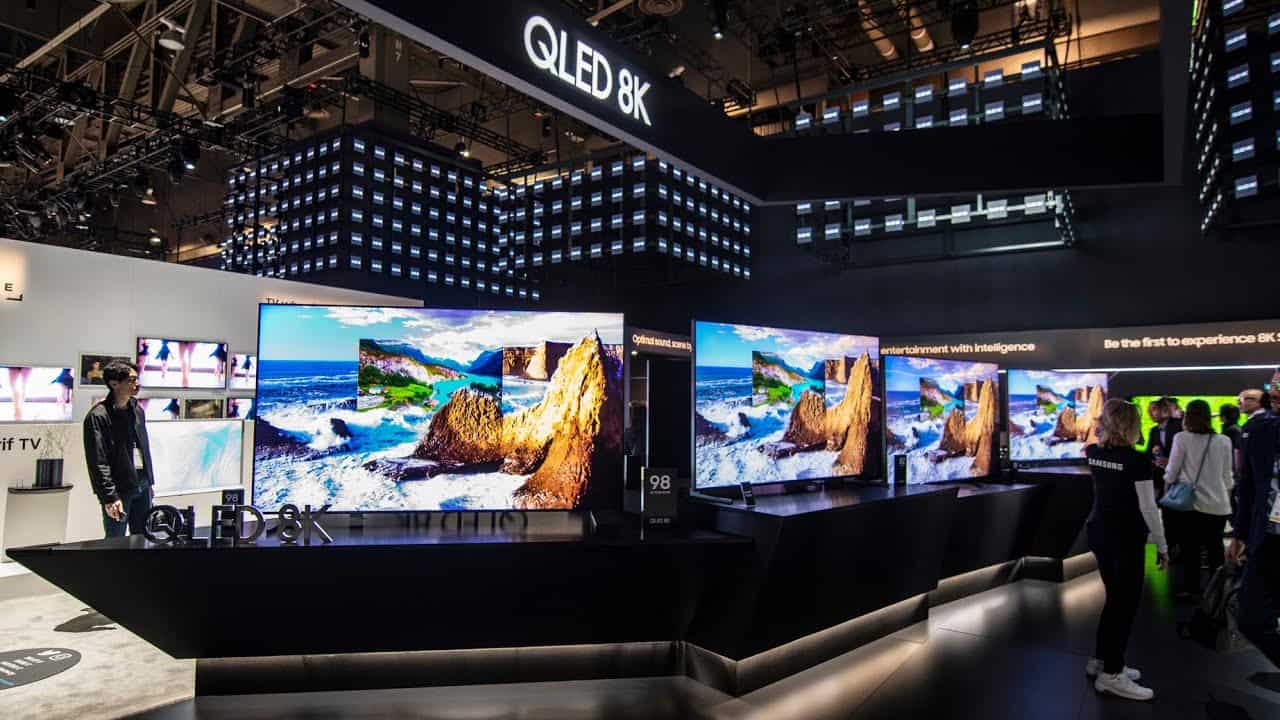
Advantages of QLED TV, How good is it?
Due to quantum dot filters, light is able to pass through the dots more efficiently and effectively, resulting in a wider and more accurate color range. The quantum dots also precisely control each color that is emitted, replacing the red, green, and blue filters used in older TVs.
QLED HDR Samsung claims that their QLED TVs use a new filter that displays 100% coverage of the DCI-P3 color range (with deep blacks and sparkling HDR) while maintaining performance at any level of brightness. The maximum brightness level can reach between 1500 nits and 2000 nits, while still maintaining accurate colors.
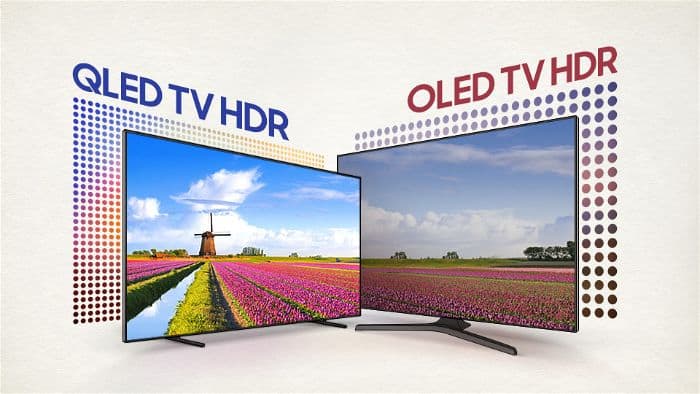
In short, the use of very small nanoparticles dramatically improves the color and brightness of the screen.
The Samsung Q65R is one example of a TV that uses a Samsung QLED 4K UHD screen panel with a 43-inch screen. In addition, they also created the Samsung The Frame 50 inches or Samsung The Frame 85 inches as a TV wallpaper, then Samsung Neo QLED 55 inches and Samsung the serif 50 inches, as their flagship TV.
QLED TVs are expensive, but there are also affordable options such as the TCL QLED 43-inch q725 or Xiaomi QLED 55-inch.
QLED VS OLED, Which Is Better!
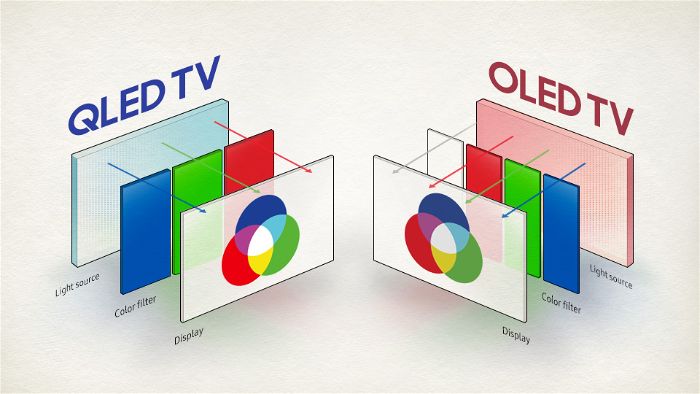
OLED technology now has a strong competitor, QLED. Both have their own advantages and disadvantages.
To determine which technology is better, we will compare in detail the advantages and disadvantages of both. So you can choose which TV is the right choice. Here are 10 differences between QLED and OLED.
1. Black level
Dark colors make the image appear as natural as possible. To display dark colors, the OLED panel will turn off the pixels, so there is no light shining through. Of course, the black level color will be very dark.
While the QLED panel is not as good as OLED, because in displaying dark colors it will only block the screen light so that the screen still has light. This makes it not truly black as the OLED screen.
2. Brightness
QLED panels have an advantage in terms of brightness. They use separate LED screen lights that can produce a super high level of brightness.
The ability of Quantum dots can produce very bright light, without losing color saturation. This means that the colors emitted will be truly consistent, so the contrast will remain good in both dark and bright rooms. QLED can handle brightness levels from 1,500 to 2,000 nits if the manufacturer wants to have such bright backlight.
On the advantage side, you can enjoy HDR content in very bright rooms.

While for OLED screens, they typically have a brightness level of 500 to 800 nits, they cannot produce pure colors at high brightness levels, each pixel cannot produce the same level of light. However, OLED can still produce pure colors at not-so-high brightness levels.
3. Color coverage
QLED can be better than OLED; in terms of color accuracy, color brightness, and color volume. According to Samsung, QLED has a wide range of colors with the best saturation, and can reach higher levels of brightness.
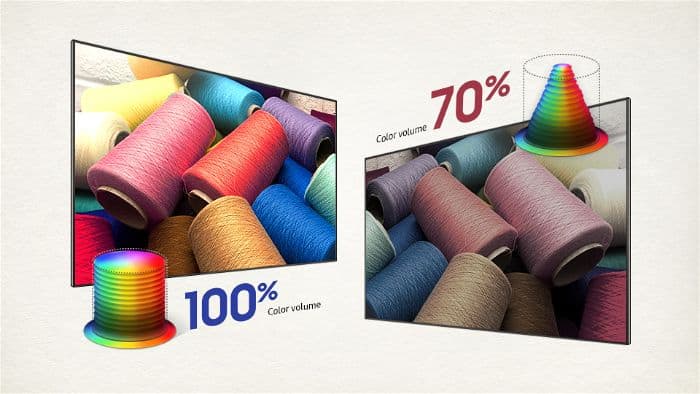
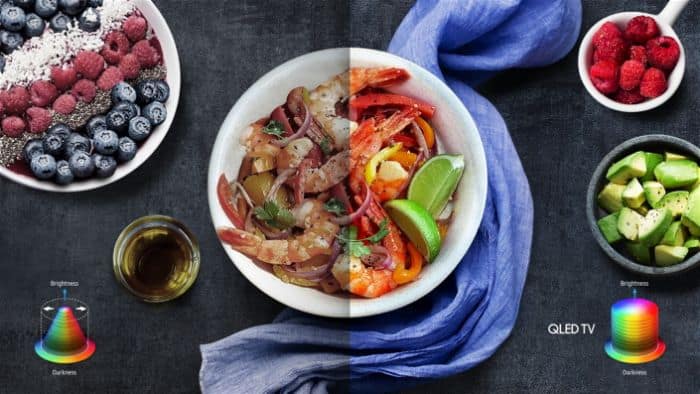
QLED display has a warmer tone than other types of displays, because red and orange quantum dots are larger than blue and green. Its color coverage is also very wide, up to 84% of Rec. 2020, while OLED is typically slightly lower with a range of 75% of Rec. 2020.
4. Response Time
Response time, the time it takes to switch from one condition to another. Can be said this is the time needed for color change.
The faster the process, the sharper the image produced will be when there is movement (or smooth), this is called motion blur. QLED response time varies, between 2 to 8 milliseconds (similar to the standard LED panels in general), but OLED is faster with 0.1 or 0.2 milliseconds (this is very fast).
However, when viewed as a TV, the appearance will be the same and no differences will be shown. So choosing either one doesn’t matter. Except for pro gaming monitors class, which is looking for low motion blur.
Refresh rate, changing or updating the screen display every second. Normally, TVs use a Refresh rate of 60Hz, for more advanced there is 120Hz. Each TV has a varying Refresh rate, and all can be applied to both panels.
5. Viewing angle (wide viewing angle)
QLED screens will look good when viewed from the front. And when moving more to the side (or top and bottom) the image quality will decrease and change, both in terms of color and contrast.
Although the viewing angle has been slightly improved by adding an anti-reflective layer, it cannot match OLED. So OLED is still better when viewed from any angle.
6. Size
Initially, OLEDs were only available for screens up to 55 inches, then 88 inches. But QLEDs can be larger than that, because at that time Samsung had released with larger screens, which can reach 98 inches 8k.
7. Lifespan
QLED TVs use LED backlighting, which essentially has a longer lifespan, or can be said to be more durable. Then the new inorganic material in the form of Quantum Dots, providing consistent color expression over the long term.
While OLED TVs have a shorter lifespan. For how long it can last, it depends on usage. Additionally, the organic material used can fade over time.
8. Burn-in
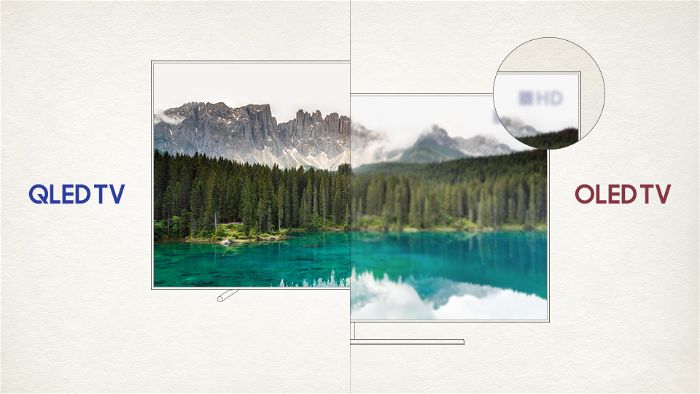
Burn-in or burn-in is a problem that causes permanent color changes on the screen.
QLED with inorganic Quantum dots do not cause burn-in, even at maximum brightness. So it is more resistant to burn-in issues.
While OLEDs are more prone to burn-in, due to being combined with organic materials. It will quickly experience burn-in if it is lit with high brightness causing excessive heat.
9. Power consumption
QLED technology is similar to other panels such as LED panels in general, using a backlight behind the panel to emit light. As is known, this makes it more power-hungry.
OLED panels are lightweight and thin. Each pixel on the OLED panel can adjust its own brightness, making it more efficient by consuming less power. Especially if the image displayed is not always bright, or tends to be mostly dark. In essence, OLED panel power consumption adjusts the content being displayed.
10. Price
Although the technology is newer, the cost of making QLED panels is cheaper than OLEDs. We know that both have the same premium quality.
The reason why OLEDs can be expensive is because the process of making the panel is difficult, with a range of prices 30 to 50% more expensive than QLEDs.
Conclusions and Table of Differences
Quite a length of difference is made, this is the conclusion in the form of a table.
| Difference | QLED | OLED |
|---|---|---|
| Black level | Good | Perfect (Can be 0 nits, black without light) |
| Brightness | Perfect (2000 nits) | Good (500 – 800 nits) |
| Color coverage | Wider (84% at REC 2020) | Spacious (75% at REC 2020) |
| Response Time | Fast | Very fast |
| View angle | Good | Better |
| Panel size for TV | Can be wider | Large |
| Use time | Longer | Short |
| Layar Burn-in | More resistant | Less resistant |
| Power consumption | Lots | A little |
| Price | Lower | High (30 – 50% more expensive) |
What is QLED?
QLED is a screen panel technology that uses nano-sized inorganic quantum dot materials to filter LED light.
Qled TV is
QLED TV is a television that utilizes the quantum dot technology developed by Samsung.
The difference between QLED and LED
Both work in a similar way, but QLED uses quantum dot particles to manage colors.

